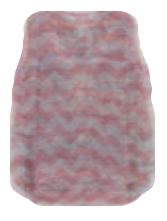Developing New Features With Our Customers
One of the great things about being a software engineer at Stitch Fix is that most of our applications are internal-facing. This means that many of our “customers” are also our co-workers and may even work in the same building as us. For example, I work on our engineering team that supports our merchandising organization - the people who plan, buy, design, and allocate our inventory. Our merchants work with us in our headquarters on Market St. in downtown San Francisco.

 Here at Stitch Fix, we are always looking for new ways to improve our client experience. On the algorithms side that means helping our stylists to make better fixes through a robust recommendation system. With that in mind, one path to better recommendations involves creating an automated process to understand and quantify the style our inventory and clients at a fundamental level. Few would doubt that fashion is primarily a visual art form, so in order to achieve this goal we must first develop a way to interpret the style within images of clothing. In this post we’ll look specifically at how to build an automated process using photographs of clothing to quantify the style of some of items in our collection. Then we will use this style model to make new computer generated clothing like the image to the right.
Here at Stitch Fix, we are always looking for new ways to improve our client experience. On the algorithms side that means helping our stylists to make better fixes through a robust recommendation system. With that in mind, one path to better recommendations involves creating an automated process to understand and quantify the style our inventory and clients at a fundamental level. Few would doubt that fashion is primarily a visual art form, so in order to achieve this goal we must first develop a way to interpret the style within images of clothing. In this post we’ll look specifically at how to build an automated process using photographs of clothing to quantify the style of some of items in our collection. Then we will use this style model to make new computer generated clothing like the image to the right.